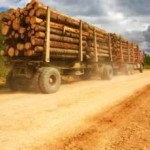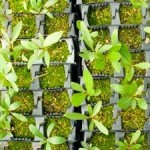The original plan for the Saemangeum Reclamation project land was to convert it to rice fields, but now it looks like there will be a theme park, hotels, golf courses, condominiums, a convention center and lots of “low carbon” factories.
Nial Moores, Director of Birds Korea, a wetland conservation group, advocates opening the dike, saying, “The wetland can still be restored.”
Meanwhile, opposition to the Four Rivers project rolls on. The South Chungcheong and South Gyeongsang Provinces have each formed special committees to re-examine the project and propose alternatives.
When several regional governors, including South Gyeongsang’s Kim Doo-kwan, decided to rethink the project and to postpone construction at several sites along the Nakdong River, they were told by central government officials to step aside so that the job could be finished. Government whistle-blowers have lost their jobs and been threatened with fines. The fact of the matter is that a lot of earth has already been moved around, and a lot more will be moved around before the Four Rivers Project is finished.
A Japanese delegation that visited the site this July was “at a complete loss for words” as to the speed and scale of the construction. One observer remarked it appears that a canal is being built. Many people think a canal is indeed being built.
President Lee rose to power on the 747 slogan, “7 percent growth and US $ 40,000/year income within 7 years.” But his dream for a “Grand Canal” linking Busan to Seoul was shouted down unanimously. Some believe that the Four Rivers Project is a reincarnation of the grand canal project.

To date, about 25 percent of the project has been completed, with a completion date sometime at the end of 2011, according to today’s ‘Chosun Ilbo’, Korea’s flagship news daily. The paper states that so far 500 million cubic meters of earth have been dredged from river bottoms. Visitors to several of the sites report former wetlands replaced by “huge mountains of sand,” punctuated with heavy earth-moving machinery and a steady traffic of dump-trucks.
South Korea is a country that, due to its high population density, puts a tremendous stress on the environment. But those numbers are declining.
South Korea has the lowest birthrate and one of the highest suicide rates of any country on Earth, trends that indicate the country’s future need for water resources will be less than today’s need.
Youngtae Cho, Professor of Health Demography at the Seoul University School of Public Health, asks, “If current trends continue, the population of South Korea will be down to 25 million by 2070, or about half the number of people currently alive today.”
So, many people ask why the government is pouring all this concrete and securing all these so-called water resources, if the future population will be only half the size it is today.
Source: ENS Press Release dated August 16, 2010.











